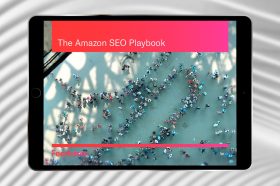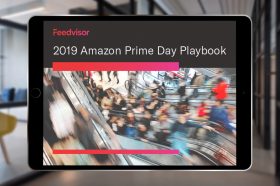Resources - Blog
Amazon Prime Day Series: 2018 Highlights, How You Can Prepare for 2019

Stay on top of the latest e-commerce and marketplace trends.
The Amazon Prime Day series will run throughout the month of July and focus on relevant Prime Day news, as well as specific strategies you can implement to effectively navigate the period of time before, during, and after Prime Day.
Before we dive into our actionable recommendations to help you prepare for Prime Day 2019 — which will span two full days and take place on July 15 and 16 — let’s recount some helpful statistics from Prime Day 2018 to reinforce how important having a detailed Prime Day strategy in place truly is.
Fast Facts From Prime Days of the Past
1. Prime members in 17 countries across North America, Europe, and Asia-Pacific participated in Prime Day 2018.
2. More than 100 million products were purchased last year during Prime Day. Best-sellers worldwide were Amazon’s own technology products, the Fire TV Stick and Alexa-enabled Echo Dot.
3. Excluding Amazon devices, best-sellers were the Instant Pot pressure cooker in the United States, Bosch cordless drill in the United Kingdom, and Sonicare toothbrush in China.
4. More consumers joined Amazon Prime on July 16, 2018, than any other day in Amazon history. Although over half of U.S. consumers are currently Prime members, Amazon’s launch of one-day shipping on more than 10 million items may be the incentive people need to join Amazon Prime this Prime Day.
5. Small and medium-sized businesses (SMBs) selling on Amazon exceeded $1 billion in sales on Prime Day 2018.
6. Nearly one-third of U.S. consumers (29%) have made a purchase during a previous Prime Day. Younger consumers are more likely to have taken advantage of Prime Day sales.
7. Top Amazon product categories were Toys & Games, Beauty & Personal Care, Electronics subcategories of PCs and Computer Accessories, Clothing, Shoes, & Jewelry, and Home & Kitchen.
8. For the first time, Prime members received exclusive savings at Whole Foods with Prime Day deals, and ended up saving more than $1 million. The best-selling deal was on organic strawberries.
What You Can Do During the Prime Day Lead-Up
Prime Day is an ideal opportunity for you to accelerate your sales and brand exposure. Below are three key ways that Prime Day accomplishes this:
- Enables you to engage with loyal shoppers — Prime members — before, during, and after Prime Day
- Drives conversions on deals and other products in your catalog
- Increases new-to-brand shoppers
According to Amazon, Prime Day is not confined to the two days of the event itself. Instead, it spans the weeks before, during, and after the high-volume shopping event. In this particular article, we will focus on the Prime Day lead-up, the period of time before Prime Day actually occurs.
Like it did last year, Amazon once again catalyzed Prime Day awareness three weeks in advance, announcing specific plans for the event such as live concerts, new Lightning Deals and product launches from top brands, and Prime Exclusive Discounts. Before July 15 arrives, Amazon will release select Prime Day deals, allowing shoppers to start to engage with unique Prime Day offerings with the intent to convert at some point in their purchase journey.
During the Prime Day lead-up, which consists of the two to three weeks prior to the shopping event, you can take the opportunity to promote your deals and brand to researching audiences who may be considering your products. According to Amazon, the majority of Amazon shoppers visited the platform in the seven days leading up to their transaction during Prime Day last year.
Test Your Lead-Up Campaigns in Preparation for Prime Day
Across your Sponsored Products, Sponsored Brands, and Amazon Stores, be sure to test your audience and promoted product strategies for sequencing, featuring, and groupings.
For the more brand-focused Sponsored Brands and Stores, be sure to A/B test copy, headlines, featured images, and Store layout to ensure that your brand’s value proposition and key products are clearly represented. You can drive consumers to your Store by utilizing Sponsored Brands, which Amazon cites as driving a 22% increase on average in return on ad spend (RoAS).
For both Sponsored Products and Sponsored Brands, be sure to experiment with keyword strategies by match type and for branded, category, product, and competitor keywords and increase your bids to capture a lift in impressions. Lastly, Amazon recommends adjusting your ad budgets to at least 200% higher than your daily campaign spend.
Use the time before Prime Day to be sure your campaigns are aligned with your business objectives. If accelerating sales is your top priority, for example, you can optimize campaigns for clicks, conversions, advertising cost of sales (ACoS), and new-to-brand metrics. If generating brand awareness is your goal, focus on ad formats that favor impressions such as product display ads. Before launching any campaigns, however, be sure that your on-page content is optimized to drive the most relevant traffic to your listings.
Learn what Feedvisor can do for your business.
When you partner with Feedvisor, you automatically receive access to our true, AI-driven technology and hands-on team of e-commerce experts. Contact one of our team members today to learn more about our end-to-end solution for brands and large sellers on Amazon, Walmart, and e-marketplaces.



